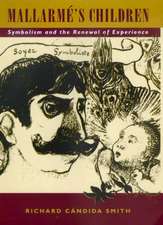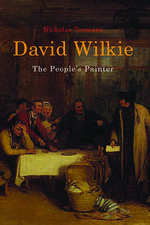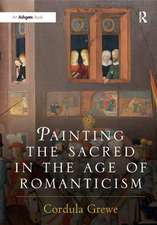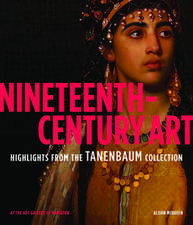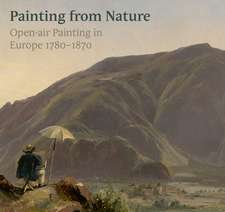Architecture and the Late Ottoman Historical Imaginary: Reconfiguring the Architectural Past in a Modernizing Empire: Studies in Art Historiography
Autor Ahmet A. Ersoyen Limba Engleză Hardback – 30 apr 2015
| Toate formatele și edițiile | Preț | Express |
|---|---|---|
| Paperback (1) | 389.38 lei 43-57 zile | |
| Taylor & Francis – 11 sep 2019 | 389.38 lei 43-57 zile | |
| Hardback (1) | 1048.88 lei 43-57 zile | |
| Taylor & Francis – 30 apr 2015 | 1048.88 lei 43-57 zile |
Din seria Studies in Art Historiography
-
 Preț: 355.68 lei
Preț: 355.68 lei -
 Preț: 311.26 lei
Preț: 311.26 lei - 9%
 Preț: 935.85 lei
Preț: 935.85 lei -
 Preț: 312.75 lei
Preț: 312.75 lei -
 Preț: 328.18 lei
Preț: 328.18 lei -
 Preț: 311.61 lei
Preț: 311.61 lei - 16%
 Preț: 261.28 lei
Preț: 261.28 lei - 12%
 Preț: 328.19 lei
Preț: 328.19 lei - 17%
 Preț: 259.98 lei
Preț: 259.98 lei -
 Preț: 387.75 lei
Preț: 387.75 lei -
 Preț: 418.65 lei
Preț: 418.65 lei -
 Preț: 449.41 lei
Preț: 449.41 lei -
 Preț: 381.72 lei
Preț: 381.72 lei -
 Preț: 389.27 lei
Preț: 389.27 lei - 25%
 Preț: 769.66 lei
Preț: 769.66 lei -
 Preț: 390.80 lei
Preț: 390.80 lei - 17%
 Preț: 259.98 lei
Preț: 259.98 lei -
 Preț: 396.02 lei
Preț: 396.02 lei - 31%
 Preț: 764.13 lei
Preț: 764.13 lei -
 Preț: 449.41 lei
Preț: 449.41 lei - 9%
 Preț: 936.74 lei
Preț: 936.74 lei - 12%
 Preț: 299.52 lei
Preț: 299.52 lei - 12%
 Preț: 325.34 lei
Preț: 325.34 lei - 17%
 Preț: 258.09 lei
Preț: 258.09 lei -
 Preț: 383.30 lei
Preț: 383.30 lei - 30%
 Preț: 799.70 lei
Preț: 799.70 lei - 21%
 Preț: 258.91 lei
Preț: 258.91 lei -
 Preț: 386.61 lei
Preț: 386.61 lei
Preț: 1048.88 lei
Preț vechi: 1279.12 lei
-18% Nou
Puncte Express: 1573
Preț estimativ în valută:
200.71€ • 210.08$ • 167.05£
200.71€ • 210.08$ • 167.05£
Carte tipărită la comandă
Livrare economică 31 martie-14 aprilie
Preluare comenzi: 021 569.72.76
Specificații
ISBN-13: 9781472431394
ISBN-10: 1472431391
Pagini: 334
Ilustrații: Includes 71 b&w illustrations
Dimensiuni: 156 x 234 x 19 mm
Greutate: 1.85 kg
Ediția:New ed.
Editura: Taylor & Francis
Colecția Routledge
Seria Studies in Art Historiography
Locul publicării:Oxford, United Kingdom
ISBN-10: 1472431391
Pagini: 334
Ilustrații: Includes 71 b&w illustrations
Dimensiuni: 156 x 234 x 19 mm
Greutate: 1.85 kg
Ediția:New ed.
Editura: Taylor & Francis
Colecția Routledge
Seria Studies in Art Historiography
Locul publicării:Oxford, United Kingdom
Notă biografică
Ahmet A. Ersoy is Associate Professor at the History Department at Boğaziçi University, Istanbul. He is the co-author, with Vangelis Kechriotis and Maciej Gorny, of Discourses of Collective Identity in Central and Southeastern Europe (1775-1945): Texts and Commentaries, Vol. III / I (2010).
Recenzii
'Critical historiography at its best ... This refreshing account of the art, architecture and culture of Tanzimat takes issue with traditional frameworks of analysis and thrives on attention to nuance, contingency, ambivalence, syncretism and cultural reciprocity in explaining late Ottoman Empire’s engagement with Europe ... A timely contribution to Ottoman/Turkish studies as well as to broader theoretical debates on orientalism, historicism, revivalism, authenticity, cultural difference and identity formation in the modern world... Above all, a much-needed cosmopolitan perspective to counteract the nationist neo-orientalism of political Islam in Turkey today.'
-- Sibel Bozdogan, Harvard University, USA
'Ersoy proves himself to be a perceptive historian who recognizes both the aspirations and ingenuity of his actors and the tenuousness of their political, economic, and cultural position on the world stage. On the whole, I would recommend this book as an invaluable addition to the libraries of not just those interested in the history of the Late Ottoman Empire, but to anyone who seeks a thoughtful reading of the polyvalent, multi-local, and mutually transformative aspects of modernization processes.'
-- CAA Reviews
-- Sibel Bozdogan, Harvard University, USA
'Ersoy proves himself to be a perceptive historian who recognizes both the aspirations and ingenuity of his actors and the tenuousness of their political, economic, and cultural position on the world stage. On the whole, I would recommend this book as an invaluable addition to the libraries of not just those interested in the history of the Late Ottoman Empire, but to anyone who seeks a thoughtful reading of the polyvalent, multi-local, and mutually transformative aspects of modernization processes.'
-- CAA Reviews
Descriere
While European eclecticism is examined as a critical moment in western art history, little research has been conducted in the historicist pursuits of late Ottoman architects as they negotiated the nineteenth century’s vast inventory of styles and embarked on a revivalist/Orientalist program they identified as the ’Ottoman Renaissance.’ Ersoy’s book examines the complex historicist discourse underlying this ’renaissance’ through a close reading of a text conceived as the movement’s canonizing manifesto: the Usul-i Mi’mari-i ’Osmani.




